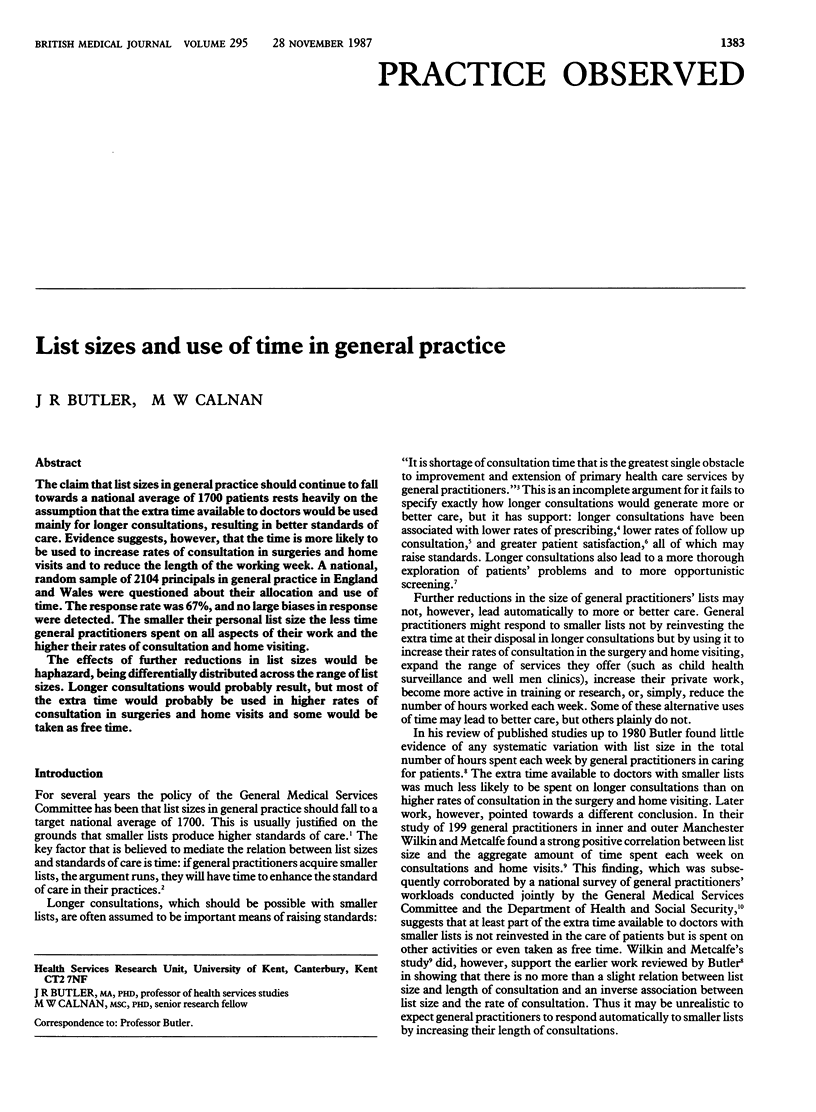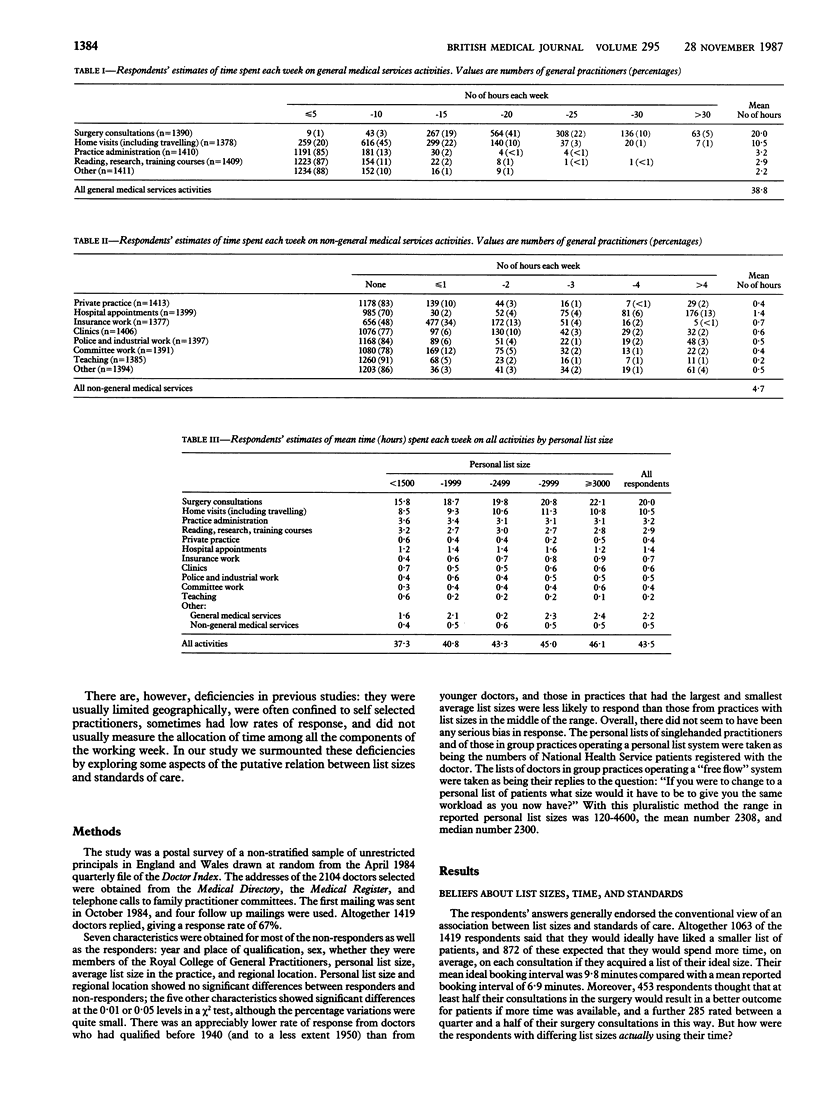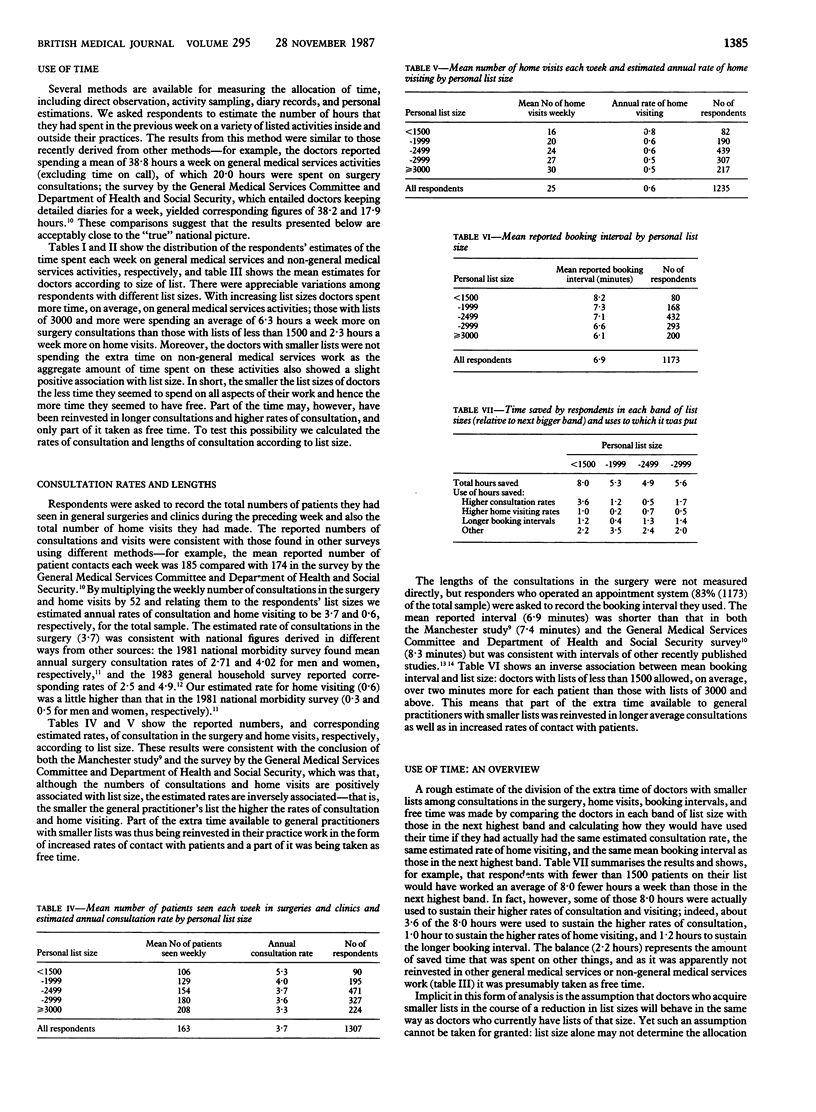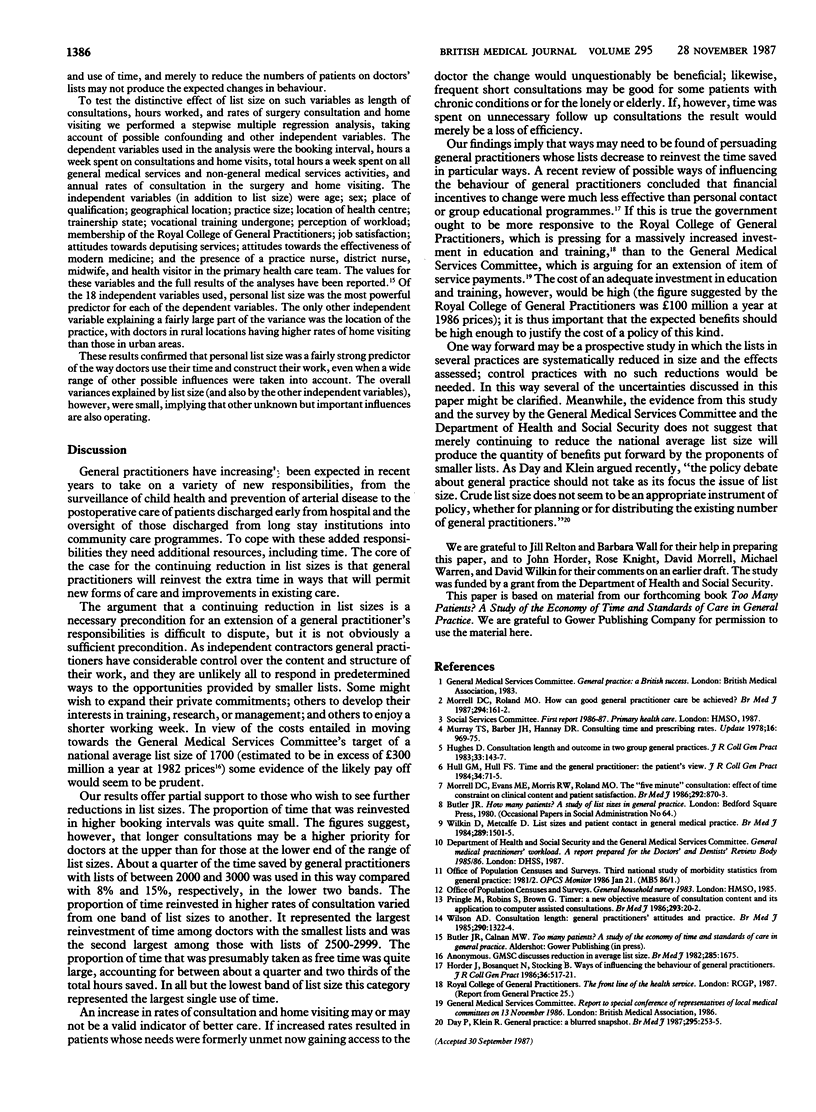Abstract
The claim that list sizes in general practice should continue to fall towards a national average of 1700 patients rests heavily on the assumption that the extra time available to doctors would be used mainly for longer consultations, resulting in better standards of care. Evidence suggests, however, that the time is more likely to be used to increase rates of consultation in surgeries and home visits and to reduce the length of the working week. A national, random sample of 2104 principals in general practice in England and Wales were questioned about their allocation and use of time. The response rate was 67%, and no large biases in response were detected. The smaller their personal list size the less time general practitioners spent on all aspects of their work and the higher their rates of consultation and home visiting. The effects of further reductions in list sizes would be haphazard, being differentially distributed across the range of list sizes. Longer consultations would probably result, but most of the extra time would probably be used in higher rates of consultation in surgeries and home visits and some would be taken as free time.
Full text
PDF



Selected References
These references are in PubMed. This may not be the complete list of references from this article.
- Day P., Klein R. General practice: a blurred snapshot. Br Med J (Clin Res Ed) 1987 Jul 25;295(6592):253–255. doi: 10.1136/bmj.295.6592.253. [DOI] [PMC free article] [PubMed] [Google Scholar]
- Horder J., Bosanquet N., Stocking B. Ways of influencing the behaviour of general practitioners. J R Coll Gen Pract. 1986 Nov;36(292):517–521. [PMC free article] [PubMed] [Google Scholar]
- Hughes D. Consultation length and outcome in two group general practices. J R Coll Gen Pract. 1983 Mar;33(248):143–147. [PMC free article] [PubMed] [Google Scholar]
- Hull F. M., Hull F. S. Time and the general practitioner: the patient's view. J R Coll Gen Pract. 1984 Feb;34(259):71–75. [PMC free article] [PubMed] [Google Scholar]
- Morrell D. C., Evans M. E., Morris R. W., Roland M. O. The "five minute" consultation: effect of time constraint on clinical content and patient satisfaction. Br Med J (Clin Res Ed) 1986 Mar 29;292(6524):870–873. doi: 10.1136/bmj.292.6524.870. [DOI] [PMC free article] [PubMed] [Google Scholar]
- Morrell D. C., Roland M. O. How can good general practitioner care be achieved? Br Med J (Clin Res Ed) 1987 Jan 17;294(6565):161–162. doi: 10.1136/bmj.294.6565.161. [DOI] [PMC free article] [PubMed] [Google Scholar]
- Pringle M., Robins S., Brown G. Timer: a new objective measure of consultation content and its application to computer assisted consultations. Br Med J (Clin Res Ed) 1986 Jul 5;293(6538):20–22. doi: 10.1136/bmj.293.6538.20. [DOI] [PMC free article] [PubMed] [Google Scholar]
- Wilkin D., Metcalfe D. H. List size and patient contact in general medical practice. Br Med J (Clin Res Ed) 1984 Dec 1;289(6457):1501–1505. doi: 10.1136/bmj.289.6457.1501. [DOI] [PMC free article] [PubMed] [Google Scholar]
- Wilson A. D. Consultation length: general practitioners' attitudes and practices. Br Med J (Clin Res Ed) 1985 May 4;290(6478):1322–1324. doi: 10.1136/bmj.290.6478.1322. [DOI] [PMC free article] [PubMed] [Google Scholar]


